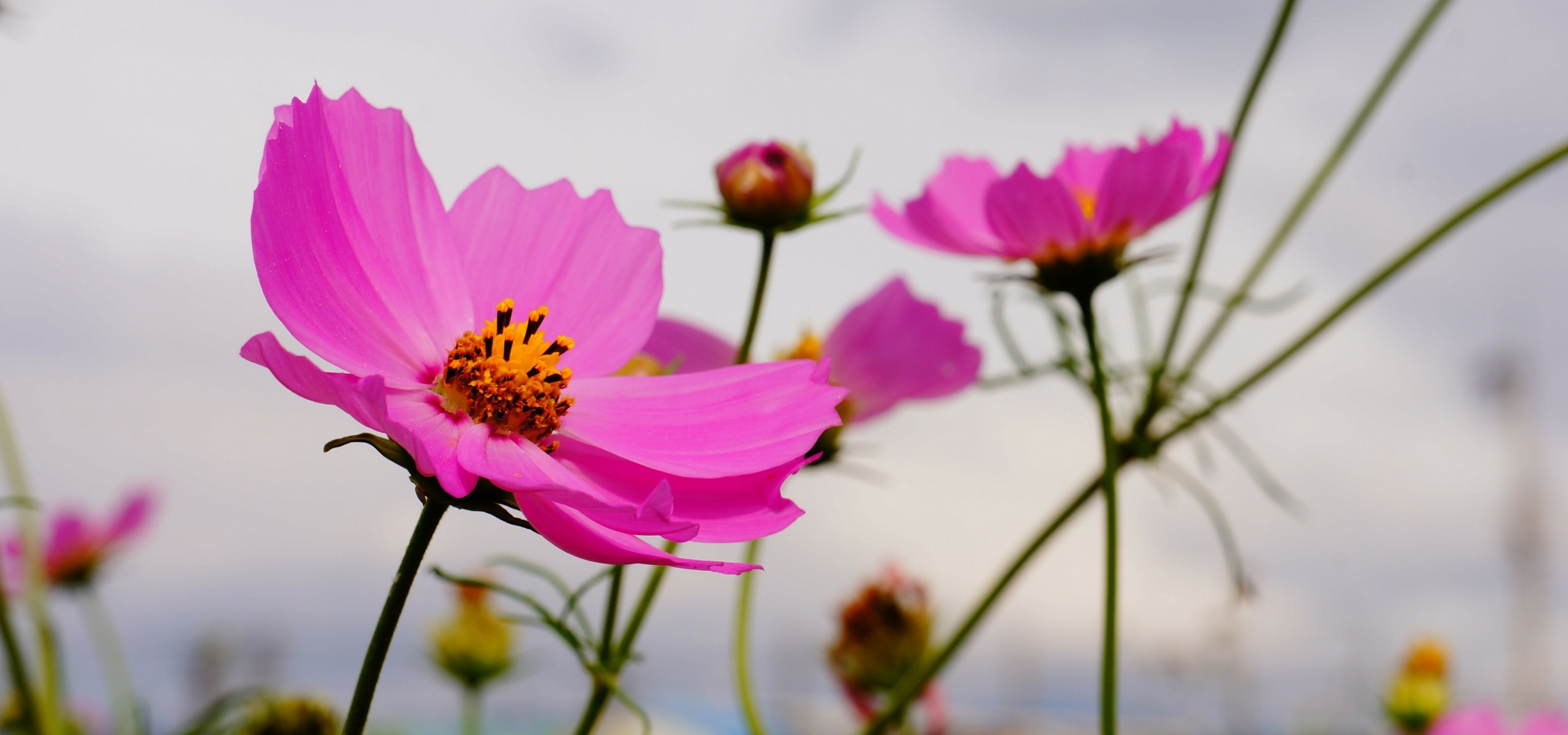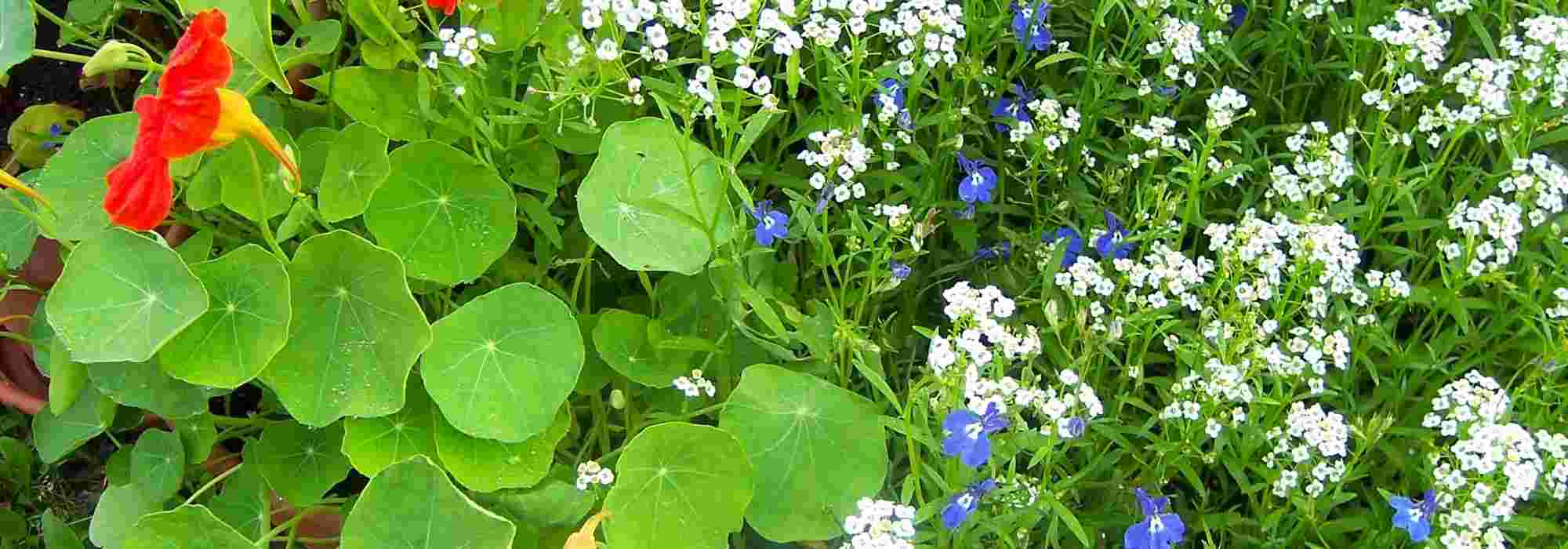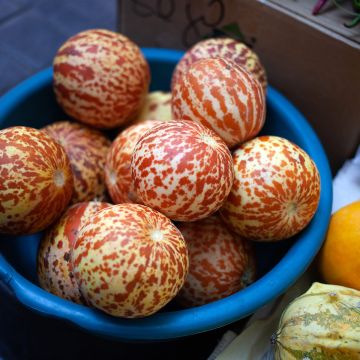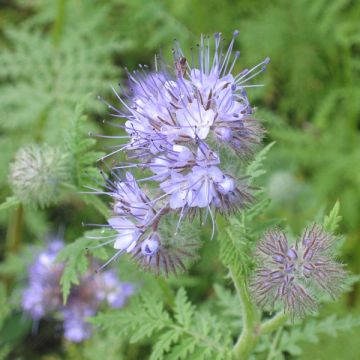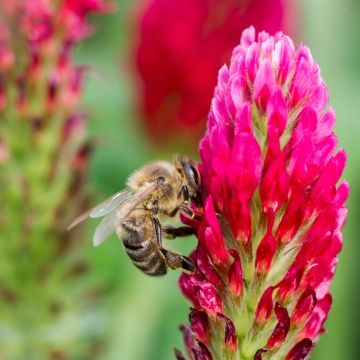

Monarda didyma Panorama Red Shades seeds - Beebalm
Monarda didyma Panorama Red Shades seeds - Beebalm
Monarda didyma Red Shades
Bergamot, Bee Balm, Oswego Tea, Horsemint
Special offer!
Receive a €20 voucher for any order over €90 (excluding delivery costs, credit notes, and plastic-free options)!
1- Add your favorite plants to your cart.
2- Once you have reached €90, confirm your order (you can even choose the delivery date!).
3- As soon as your order is shipped, you will receive an email containing your voucher code, valid for 3 months (90 days).
Your voucher is unique and can only be used once, for any order with a minimum value of €20, excluding delivery costs.
Can be combined with other current offers, non-divisible and non-refundable.
Home or relay delivery (depending on size and destination)
Schedule delivery date,
and select date in basket
This plant carries a 6 months recovery warranty
More information
We guarantee the quality of our plants for a full growing cycle, and will replace at our expense any plant that fails to recover under normal climatic and planting conditions.
Would this plant suit my garden?
Set up your Plantfit profile →
Description
Monarda didyma 'Panorama Red Shades' is a decorative countryside perennial known for its scarlet red inflorescences resembling dense pompoms. Its bright green, aromatic foliage releases a pleasant lemony scent when crushed. This cultivar stands out for its ability to flower young and its resistance to powdery mildew, a rare quality among seed-grown monardas. In the garden, it attracts a host of pollinators.
Monarda didyma 'Panorama Red Shades' is a herbaceous perennial plant from the Lamiaceae family. It is known by various common names such as scarlet beebalm, Oswego tea, bergamot, or gold balm. Native to eastern North America, the wild Monarda didyma species is naturally found in moist forests, woodland edges, and riverbanks, from Maine and Ontario to Georgia and Missouri.
The 'Panorama Red Shades' cultivar was developed by the German company Benary as part of the "Panorama" series, which includes varieties from seed that offer uniform flowering in vibrant shades of red, pink, and salmon. This series is appreciated for its ability to produce robust, mildew-resistant plants that flower from the second year after sowing.
The variety 'Panorama Red Shades' has an upright, bushy habit, forming dense clumps 80 to 90 cm in height and about 45 cm wide. Flowering is abundant from June to August, peaking in July. The tubular, two-lipped flowers, measuring 3 to 4 cm long, are grouped in dense terminal inflorescences, resembling ruffled pompoms. Their colour ranges from bright red to scarlet, with bracts often tinged purple. The nectar-rich and honey-producing flowers attract bees and butterflies. The foliage consists of opposite, ovate to lanceolate, 7 to 15 cm long leaves with serrated edges. Slightly rough in texture, they release a lemony and minty fragrance when crushed. The aerial growth is deciduous, dying back in winter and reappearing the following spring. The fruits are dry, inconspicuous achenes containing fine seeds. The plant propagates easily by sowing, division of clumps, or propagation by cuttings.
Happy in sun or light shade, Monarda 'Panorama Red Shades' prefers ordinary soils that do not dry out in summer. In an aromatic garden or a natural garden, it remains very original in the middle of a border. Pair it with Veronicastrum virginicum 'Kleine Erika', Sanguisorba officinalis 'Tanna' with fine burgundy pompoms that subtly complement the bright red, or even perennial lobelias.
Monarda didyma is appreciated both for its decorative appeal and its culinary and medicinal uses. Its aromatic foliage can be consumed fresh or dried, particularly in infusions, where it releases lemony and minty notes. In cooking, the leaves delicately flavour meats and fish, while the flowers, with a slightly peppery taste, add an original touch to salads. Traditionally, the plant is also used for its digestive, tonic, and soothing properties in cases of breathing difficulties.
Report an error about the product description
Flowering
Foliage
Plant habit
Botanical data
Monarda
didyma
Red Shades
Lamiaceae
Bergamot, Bee Balm, Oswego Tea, Horsemint
Monarda didyma 'Panorama Red', Monarda didyma 'Red Shades'
Cultivar or hybrid
Planting and care
Sow Monarda Panorama Red Shades from February to March in cold frames (or from March to May under glass), in seed compost. Sowing during this period will allow you to enjoy the flowering of monardas from the second year.
Keep them where night temperatures can drop between 13 and 15°C. Do not exclude light, as it is necessary for germination, which will take 14 to 21 days. Later, you will acclimatise the seedlings for 10 to 15 days to outdoor temperatures. Once strong enough to be handled, transplant them into well-worked soil with added compost. Take care to space your young plants 45 cm apart.
Monarda thrives in sun or partial shade, in fairly rich, well-drained, slightly moist soil that does not dry out in summer.
Sowing period
Intended location
Planting & care advice
This item has not been reviewed yet - be the first to leave a review about it.
Similar products
Haven't found what you were looking for?
Hardiness is the lowest winter temperature a plant can endure without suffering serious damage or even dying. However, hardiness is affected by location (a sheltered area, such as a patio), protection (winter cover) and soil type (hardiness is improved by well-drained soil).

Photo Sharing Terms & Conditions
In order to encourage gardeners to interact and share their experiences, Promesse de fleurs offers various media enabling content to be uploaded onto its Site - in particular via the ‘Photo sharing’ module.
The User agrees to refrain from:
- Posting any content that is illegal, prejudicial, insulting, racist, inciteful to hatred, revisionist, contrary to public decency, that infringes on privacy or on the privacy rights of third parties, in particular the publicity rights of persons and goods, intellectual property rights, or the right to privacy.
- Submitting content on behalf of a third party;
- Impersonate the identity of a third party and/or publish any personal information about a third party;
In general, the User undertakes to refrain from any unethical behaviour.
All Content (in particular text, comments, files, images, photos, videos, creative works, etc.), which may be subject to property or intellectual property rights, image or other private rights, shall remain the property of the User, subject to the limited rights granted by the terms of the licence granted by Promesse de fleurs as stated below. Users are at liberty to publish or not to publish such Content on the Site, notably via the ‘Photo Sharing’ facility, and accept that this Content shall be made public and freely accessible, notably on the Internet.
Users further acknowledge, undertake to have ,and guarantee that they hold all necessary rights and permissions to publish such material on the Site, in particular with regard to the legislation in force pertaining to any privacy, property, intellectual property, image, or contractual rights, or rights of any other nature. By publishing such Content on the Site, Users acknowledge accepting full liability as publishers of the Content within the meaning of the law, and grant Promesse de fleurs, free of charge, an inclusive, worldwide licence for the said Content for the entire duration of its publication, including all reproduction, representation, up/downloading, displaying, performing, transmission, and storage rights.
Users also grant permission for their name to be linked to the Content and accept that this link may not always be made available.
By engaging in posting material, Users consent to their Content becoming automatically accessible on the Internet, in particular on other sites and/or blogs and/or web pages of the Promesse de fleurs site, including in particular social pages and the Promesse de fleurs catalogue.
Users may secure the removal of entrusted content free of charge by issuing a simple request via our contact form.
The flowering period indicated on our website applies to countries and regions located in USDA zone 8 (France, the United Kingdom, Ireland, the Netherlands, etc.)
It will vary according to where you live:
- In zones 9 to 10 (Italy, Spain, Greece, etc.), flowering will occur about 2 to 4 weeks earlier.
- In zones 6 to 7 (Germany, Poland, Slovenia, and lower mountainous regions), flowering will be delayed by 2 to 3 weeks.
- In zone 5 (Central Europe, Scandinavia), blooming will be delayed by 3 to 5 weeks.
In temperate climates, pruning of spring-flowering shrubs (forsythia, spireas, etc.) should be done just after flowering.
Pruning of summer-flowering shrubs (Indian Lilac, Perovskia, etc.) can be done in winter or spring.
In cold regions as well as with frost-sensitive plants, avoid pruning too early when severe frosts may still occur.
The planting period indicated on our website applies to countries and regions located in USDA zone 8 (France, United Kingdom, Ireland, Netherlands).
It will vary according to where you live:
- In Mediterranean zones (Marseille, Madrid, Milan, etc.), autumn and winter are the best planting periods.
- In continental zones (Strasbourg, Munich, Vienna, etc.), delay planting by 2 to 3 weeks in spring and bring it forward by 2 to 4 weeks in autumn.
- In mountainous regions (the Alps, Pyrenees, Carpathians, etc.), it is best to plant in late spring (May-June) or late summer (August-September).
The harvesting period indicated on our website applies to countries and regions in USDA zone 8 (France, England, Ireland, the Netherlands).
In colder areas (Scandinavia, Poland, Austria...) fruit and vegetable harvests are likely to be delayed by 3-4 weeks.
In warmer areas (Italy, Spain, Greece, etc.), harvesting will probably take place earlier, depending on weather conditions.
The sowing periods indicated on our website apply to countries and regions within USDA Zone 8 (France, UK, Ireland, Netherlands).
In colder areas (Scandinavia, Poland, Austria...), delay any outdoor sowing by 3-4 weeks, or sow under glass.
In warmer climes (Italy, Spain, Greece, etc.), bring outdoor sowing forward by a few weeks.


































